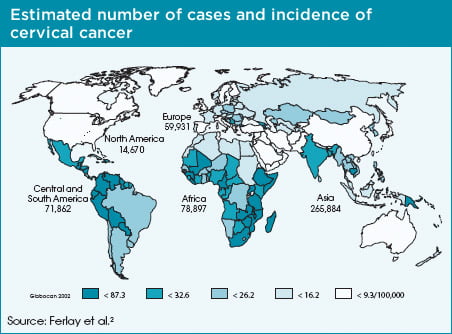The USB flash drive is one of the most simple, everyday pieces of technology that many people take for granted.
Now it's being eyed as a possible solution to bridging the digital divide, by two colorful Israelis entrepreneurs behind the start-up Keepod.
Nissan Bahar and Franky Imbesi aim to combat the lack of access to computers by providing what amounts to an operating-system-on-a-stick.
, providing the cash to begin a campaign to offer low-cost computing to the two-thirds of the globe's population that currently has little or no access.
But Mr Bahar and Mr Imbesi want to change that with their Keepod USB stick.
It will allow old, discarded and potentially non-functional PCs to be revived, while allowing each user to have ownership of their own "personal computer" experience - with their chosen desktop layout, programs and data - at a fraction of the cost of providing a unique laptop, tablet or other machine to each person.
In addition, the project avoids a problem experienced by some other recycled PC schemes that resulted in machines becoming "clogged up" and running at a snail's pace after multiple users had saved different things to a single hard drive.
The two men hope to get up to 150,000 people signed up to their idea in the country.
Day One
To do so, the pair have teamed up with LiveInSlums - a non-governmental organisation operating in Mathare to introduce the flash drives to students and staff at WhyNot Academy.
Like other schools in East Africa, the school uses text books and chalk boards to teach. Two years ago it was connected to the electricity supply.
During a visit to the school in March, Mr Bahar and Mr Imbesi decided to buy a router and a Sim card to hook the classrooms up to the internet.
Their solution involved hanging the router in a carrier bag nailed next to one of two plug sockets in the school. It looked makeshift, but that didn't prevent the children cheering when it was announced the academy had gone online.
The pair also brought five old laptops with their hard disks removed to the school.
As they gave each child one of the Keepod USB sticks to keep, they explained the second-hand computers would boot up directly from the flash drives.
In fact, any computer with a screen, keyboard and basic processor should play a perfect host because each Keepod stick comes with a unique desktop version of Google's Android 4.4 operating system on board.
The effect is to make any laptop or PC as simple to use as a smartphone, with icons displayed for each task or saved website that the user may want to see.
Each Keepod remembers its owner's settings, passwords and websites visited.
It stores any files or programs downloaded on the other half of its 8GB storage capacity. The information can be encrypted and is protected by a password needed for operation when it's plugged in.
"It makes it possible for anyone with a Keepod to use any computer and get the same experience," says Mr Bahar.
"Each child will see their own files and apps appear in exactly the same way each time, without the need to remember lots of passwords."
The amazement and excitement at seeing these old laptops come to life was palpable inside the classroom.
And the children stayed long after classes had ended to explore and set up their new devices.
Head teacher, Dominic Otieno believes the technology will help change the children's mind sets.
"It will help Africans help themselves, it will help them to start to learn the skills of business," he says.
"They are going to learn to read the story of people who have made it from nothing, but through business, people who did not go through a lot of education but they made it."
Before they left the school, there was more good news for the Keepod founders.
A teacher from the US had spotted their campaign and called mid-visit to say he would pay for more USB drives to be distributed in Nairobi if the founders also provided copies for pupils at his school.
The idea, he explained, would be that the children on each continent could communicate together and share a common experience.
Malware risk
Keepod is never going to be a huge money-spinner, but the idea is that it will eventually support itself.
Mr Bahar and Mr Imbesi's plan is for locally employed workers to buy the flash drives on the open market, install the operating system and a few essential apps, and then sell them on for a small gain.
The final price would be $7 (£4.15), delivering about a $2 profit on each device that would help cover wages and the further expansion of the project.
They explain an added benefit of their scheme over alternative computer-donation efforts is that even if a Keepod owner has their device infected with malware, it should not be able to spread to the host computer - meaning one person's misfortune should not affect others.
The start-up also plans to provide a Keepod back-up facility, offering a way to protect owners from losing their files if the USB device is lost or becomes corrupted.
Unwanted sales
Rita Anyango is one of the five people Keepod has trained up to maintain the Mathare project.
She likes the unique way in which the scheme, unlike others she has worked on, offers ownership of the computing experience to each user.
But she but fears that some parents may be tempted to trade the devices to put more expensive food on the family table, like meat, if they don't realise its long-term potential.
The tiny devices could be exchanged or worse stolen, she says, if they're not looked after.
Tony Roberts, former chief executive of the global charity Computer Aid International, also has concerns.
He warns it would be over-optimistic to place too much belief in technology being able to simply solve problems like improving education or making agriculture more efficient.
"In my experience it's always about how the people use the technology and not that technology itself as a magic bullet," he says.
"People will need to be trained and as more flash drives are sold even more people will need training, and more computer hubs will need more maintaining.
"Finding the resources to fund that within a $7 price tag will be tough."
He also makes a more pressing point. That most people in rural areas of the world are poor and it's in those areas where electricity and connectivity are often bigger challenges. Without those basics the scheme won't work.
Even so, he wishes the project well and would personally back it.
Next steps
Keepod's founders' next plan to roll it out to India, Israel, southern Italy, and other parts of sub-Saharan Africa.
The Keepod team want to take their device beyond Nairobi to other parts of the world
To help do so, they intend to sell starter packs so that anyone can supervise their own scheme with some old laptops and a bunch of cheap USB drives.
They'll be driven on by memories of the many smiling faces at the celebration thrown in Mathare to mark WhyNot Academy receiving the devices.
Here, at least, the party has already begun.
WATCH BBC : The Nairobi children's first day with the Keepod stick
 According to a survey carried out by
consulting firm Capgemini with 415 technology decision makers in public and
private organizations and published by newspaper Valor Econômico, Brazilian
corporates will become a lot more aggressive in advancing their cloud plans
after traditionally lagging behind the United States and Europe.
According to a survey carried out by
consulting firm Capgemini with 415 technology decision makers in public and
private organizations and published by newspaper Valor Econômico, Brazilian
corporates will become a lot more aggressive in advancing their cloud plans
after traditionally lagging behind the United States and Europe. According to a survey carried out by
consulting firm Capgemini with 415 technology decision makers in public and
private organizations and published by newspaper Valor Econômico, Brazilian
corporates will become a lot more aggressive in advancing their cloud plans
after traditionally lagging behind the United States and Europe.
According to a survey carried out by
consulting firm Capgemini with 415 technology decision makers in public and
private organizations and published by newspaper Valor Econômico, Brazilian
corporates will become a lot more aggressive in advancing their cloud plans
after traditionally lagging behind the United States and Europe.














